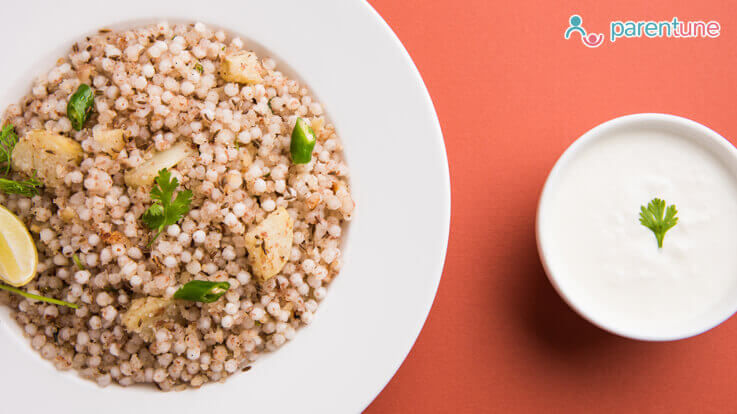Why Do We Eat Kuttu or Singhada Flour During Navratri?

Celebrating the reverence of nine distinctive avatars of Goddess Durga, Navratri is a time of abstinence from grains, onions, and garlic for nine days and worshipping the nine divine avatars of Goddess Durga. The festival is one of the most cherished festivals of Hindus and celebrated twice a year. But what is Navratri, what is the significance of fasting during the festival and what are pseudo-grains that are consumed in these nine days?
Why is Navratri Celebrated?
Navratri or Navratra as it is known literally means "nine nights." The festival is celebrated twice a year in the honor of nine avatars of Goddess Durga, once at the beginning of summer known as Chaitra Navratra and again at the onset of winter known as Shardiya Navratra.
What Is The Significance Of Fasting During Navaratri?
The main significance of fasting during Navaratri's to seek the divine blessings of Goddess Durga by abstaining from high energy foods and common salt. It is believed that if the devotees abstain from food and worship all the nine avatars of the goddess they will be blessed with peace, prosperity, and harmony in their lives.
Navaratri fasting rules vary little from the community to the community. During this time, grains and cereals are worshipped in the form of grass and eating them is avoided. People observing fasts replace their regular meals of wheat and rice with alternative cereals also known as pseudo grains, such as buckwheat, chestnut, sago, amaranth and a special variety of rice, known as samak rice (Barnyard millet).
So what are pseudo grains and how are they beneficial during Navratri?

What Are Pseudo Grains Or Pseudo Cereals?
Pseudo grains or pseudo cereals are basically seeds from the broad-leaf plants and are not grasses. While true cereals are grasses. Pseudo cereals are called so because the seeds of these grains can be grounded and used as cereals. Amarnath, buckwheat, and chia are some of the pseudo cereals.
Amarnath, chestnuts (singhara) and samak are seeds of fruits and not real cereals, getting the name of pseudo cereals. In fact, a study called "Nutritive value of pseudocereals and their increasing use as functional gluten-free ingredients" published in the Journal Trends in Food Science & Technology 21 (2010), concluded that a variety of gluten-free whole grains such as amaranth, quinoa, and buckwheat include high-quality protein and abundant quantities of fiber and minerals such as calcium and iron. Moreover, they are also a source of many bioactive compounds with health-promoting effects such as phytosterols, polyphenols, saponins, and squalene.
Why Do We Eat Kuttu Or Singhada Flour During Navaratri?
Kuttu (or Buckwheat as it is known in English) or Singhada (Water chestnuts) flour made from the seeds of the fruits and hence are not true cereals. These pseudo-cereals provide a complete and satisfactory meal while fasting during the auspicious nine days. Let’s see how these pseudo grains are beneficial for our health to include them in our diet during Navaratri.
Buckwheat (Kuttu)
- Buckwheat chapattis, poories or pakoras are very popular during Navratri owing to its nutty flavor. It also tastes delicious as a hot cereal
- Buckwheat is high in good quality protein, magnesium, vitamin B6, dietary fiber, iron, niacin (vitamin B3), thiamine (vitamin B1) and zinc
- In particular, dietary fiber content is significantly higher in buckwheat seeds in comparison with amaranth and quinoa, which have fiber levels comparable to those found in common cereals
Water Chestnut (Singhada)
- It is a highly nutritive fruit, which is a good source of carbohydrates, calcium, phosphate, iron, copper, manganese, magnesium, sodium and potassium
- The benefits of water chestnut flour can be enjoyed in the form of chapattis or pancakes
Sago (Sabudana)
- Sabudana comprises of small balls of starch prepared from the inner trunk of palm trees
- It can be consumed as it is or in ground form
- Sago has thickening properties which makes it suitable for thickening soups, sauces, stews, puddings, snack food, or desserts
- It is predominantly carbohydrate with very little protein, vitamins, minerals and fat baked in breads, pancakes or biscuits
Samak Rice (Barnyard Millets)
- Samak is a seed and not grain
- It is high on calcium, potassium, phosphorus and amino acids except for lysine
- It is usually eaten with a hull, which retains the majority of its nutrients
- Samak rice can used to make kheer, khichdi, idli or dhokla
Amarnath (Rajgiri)
- This pseudo-grain has a corn-like aroma and woody flavor which makes it suitable for breakfast cereal and porridge-like dishes
- It can also be ground into flour, which, in turn, can be used to make breads, chapattis or parathas. The flour is usually ground along with its hull, which helps retain most of its nutrients
- Protein content in amaranth and quinoa is generally higher than in common cereals such as wheat; and is usually highest in amaranth followed by quinoa and buckwheat. It is also high in dietary fiber, iron, magnesium, zinc, calcium, and B-vitamins
Can We Have These Pseudo Grains Regularly?
While these pseudo grains are packed with essential nutrients, the answer to the above-mentioned question is 'No'. It is so because all these pseudo grains take a fairly long time in getting digested by our body and even then some of it remains undigested and passes through our system as it is. Resulting in a misbalance of good and bad bacteria.
Be the first to support
Be the first to share
Comment (0)
Related Blogs & Vlogs
No related events found.
Loading more...